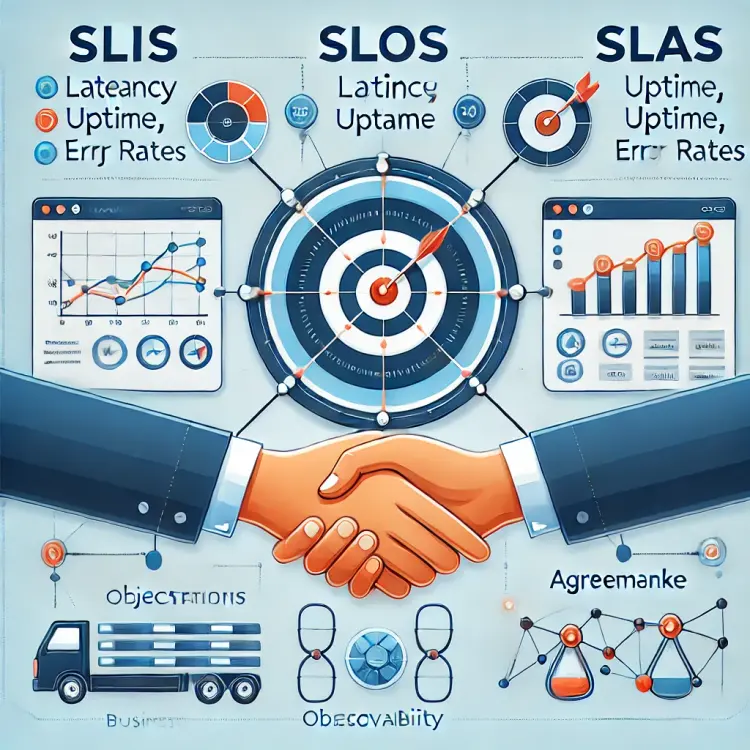
Vendor-Backed vs. Open Source Observability: What Enterprises Really Need
As modern systems grow in complexity, enterprises face increasing pressure to ensure performance, reliability, and visibility across distributed environments. One of the most important architectural decisions is how to approach observability—whether to build using open source tools or adopt a vendor-backed platform with enterprise-grade support and guarantees.
When building a modern observability stack, enterprises often face a strategic decision: should they rely on open source tooling, adopt a vendor-backed platform, or use a combination of both?
Tools like Prometheus, Grafana, and OpenSearch have earned widespread adoption for their flexibility, transparency, and strong community support. At the same time, vendor-backed platforms offer commercially supported solutions that prioritize stability, compliance, and enterprise-grade service.
There’s no one-size-fits-all answer—what’s right depends on your team’s maturity, risk tolerance, and long-term goals.
Why Open Source Remains a Powerful Option
Open source observability tools continue to thrive, especially among engineering-driven organizations. Their advantages include:
No licensing fees: Ideal for budget-conscious teams or those testing new architectures.
High customizability: Developers can tailor tools to meet specialized use cases.
Portability and control: Teams can host, deploy, and integrate on their terms, avoiding vendor lock-in.
For many teams, this level of flexibility is essential—especially in environments that value agility and experimentation.
However, managing an observability stack internally can require significant engineering investment, particularly at scale.
Why Enterprises Choose Vendor-Backed Observability
Vendor-backed solutions offer a different set of benefits, often appealing to teams with production-critical workloads, regulatory needs, or a desire to reduce operational overhead.
1. Dedicated Support and SLAs
When incidents arise—whether during peak usage or off-hours—access to guaranteed support can make a difference. Vendor-backed platforms often provide:
Defined SLAs with response-time guarantees
Technical account managers and escalation paths
Faster resolution of critical issues
This level of support can help reduce downtime and operational stress for enterprise teams.
2. Security and Compliance Readiness
For organizations in regulated industries, meeting compliance standards is non-negotiable. Vendor-supported platforms frequently include:
Regular security patches and vulnerability management
Certifications like SOC 2, ISO 27001, or HIPAA
Enterprise-ready access controls and identity integrations
That said, open source tools can also be secured effectively—doing so just places more responsibility on internal teams.
3. Predictability and Stability
Vendor offerings tend to follow structured release cycles, which may help reduce unexpected changes or regressions. Benefits often include:
QA-tested upgrades and professional release notes
A clear product roadmap aligned with customer needs
Long-term support (LTS) options
Open source projects, by contrast, can evolve quickly and may prioritize community-led innovation over enterprise stability.
4. Cost Considerations Beyond Licensing
While open source software is typically free to use, the total cost of ownership (TCO) includes engineering time, infrastructure, and support. Vendor platforms may offer:
Faster time-to-value via managed services
Reduced maintenance burden for internal teams
Predictable billing models that scale with usage
Organizations should weigh these costs against the strategic value of owning their observability infrastructure.
For teams wrestling with log storage costs, solutions like Grafana Loki and Elastic’s newer offerings are reshaping the economics of observability. Here’s a deeper look at how they compare.
A Hybrid Approach: Combining Strengths
Many enterprises find success with a blended approach:
Prototype with open source: Ideal for experimentation and internal tools
Standardize production on vendor-backed platforms: For reliability and compliance
Work with vendors that support open standards: This preserves flexibility while benefiting from commercial support
This hybrid model allows teams to innovate without sacrificing reliability.
One major enabler of this hybrid approach is OpenTelemetry—an open standard that's becoming the backbone of modern observability pipelines.
Final Thoughts
Both open source and vendor-backed observability solutions have distinct strengths—and each can play a vital role depending on organizational needs. Open source excels in flexibility and control; vendor platforms offer predictability and support.
Enterprises aren’t choosing one because the other is lacking—they’re making informed decisions based on what matters most: reliability, security, cost efficiency, and long-term scalability.